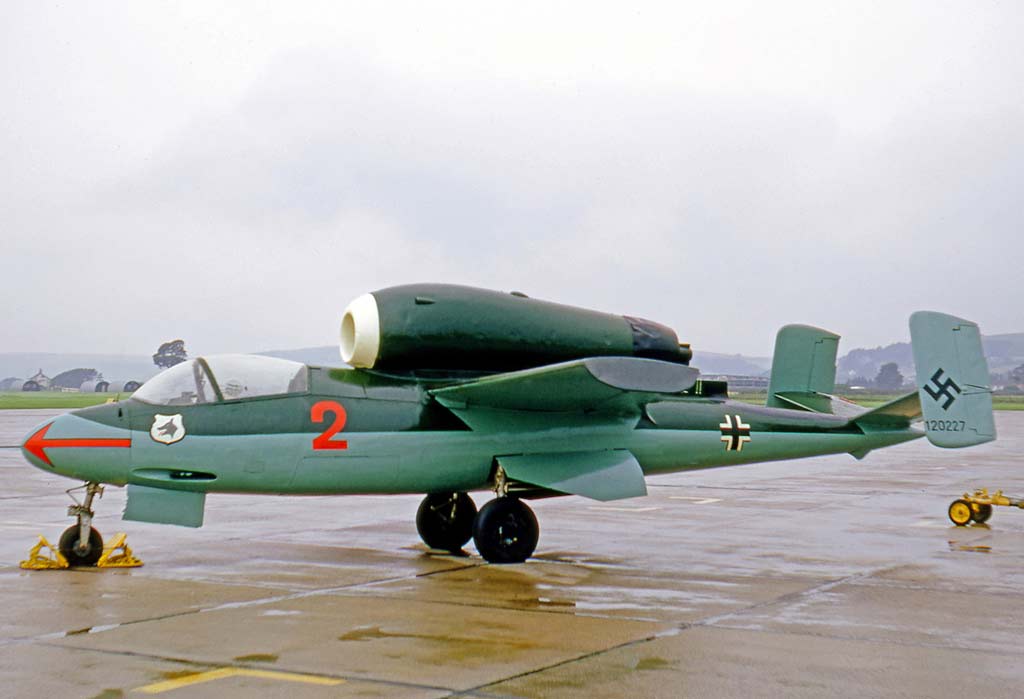The Heinkel He 162, a WWII German jet fighter, known for its lightweight design, BMW 003 turbojet engine, and role as an emergency fighter program.
This article examines the Heinkel He 162, a late WWII German jet fighter. It explores the historical context, including the urgent need for effective, easily produced jet fighters by Nazi Germany. The design segment details its innovative aspects and the challenges faced. The performance analysis compares the He 162 with contemporary fighters, underlining its strengths and weaknesses. The military use section investigates its armament, operational history, and impact on aerial combat. The conclusion reflects on its legacy in the realm of military aviation.
The Heinkel He 162 was a significant development in jet aircraft history, born out of Nazi Germany’s desperate circumstances in the latter part of World War II.
History of the Development of the Heinkel He 162:
The He 162 was developed during a critical period in WWII, as Allied forces gained superiority over Germany. Recognizing the potential of jet propulsion, the German Air Ministry initiated a program for a simple, fast, and mass-producible jet fighter. Heinkel swiftly designed the He 162, with the objective of utilizing minimal strategic materials and being suitable for production by semi-skilled labor.
The program was launched under the direst of war conditions, aiming to reverse the diminishing fortunes of the Luftwaffe. The first prototype flew in December 1944, a remarkably quick development given the challenging circumstances. The He 162 did not have a NATO nickname as it was produced before NATO was established.
Design of the Heinkel He 162:
The He 162’s design was a balance of innovation and simplicity. It had a wingspan of 7.2 meters (23 feet 7 inches) and a length of 9.05 meters (29 feet 8 inches). The aircraft was primarily constructed from wood, a decision driven by the scarcity of metals.
Powered by a single BMW 003 turbojet engine, mounted atop the fuselage, the He 162 was designed to be aerodynamically efficient and fast. Its tricycle landing gear was a modern feature, but the use of wood and non-standard parts led to structural weaknesses.
The lightweight construction, while economizing on materials, compromised the aircraft’s durability and pilot safety. Yet, the He 162 was a notable example of innovative design under resource constraints.

Performance of the Heinkel He 162:
Performance-wise, the He 162 was remarkable for its time. It could achieve a top speed of about 840 km/h (522 mph) and had a service ceiling of 12,000 meters (39,370 feet). Its range was limited to 975 kilometers (606 miles), a reflection of its role as a short-range interceptor.
Compared to the Allied fighters like the P-51 Mustang and even its German contemporary, the Messerschmitt Me 262, the He 162 was less powerful but had the advantage of being simpler and quicker to produce.
Military Use and Combat of the Heinkel He 162:
The He 162 saw limited combat use in the closing months of WWII. It was armed with two 20 mm MG 151/20 cannons, an adequate armament for its interceptor role. The aircraft was deployed in a desperate attempt to challenge Allied air superiority but faced numerous challenges, including reliability issues and inexperienced pilots.
The He 162’s operational impact was minimal due to the late stage of the war and the chaotic state of German industry and training programs. It did not face significant air-to-air combat and therefore its effectiveness in combat remains largely speculative.
Post-war, the He 162 did not see further use and was not sold to other countries. It was soon overshadowed by more advanced jet designs in the post-war era.
The Heinkel He 162 remains a unique chapter in the history of military aviation. It symbolized the ingenuity and desperation of late WWII German aircraft design, showcasing both the potential and limitations of jet technology under the constraints of war. While it had limited impact on the war’s outcome, the He 162’s innovative design and rapid development left a notable legacy in the evolution of jet fighters.
Back to the Fighter Jet section.